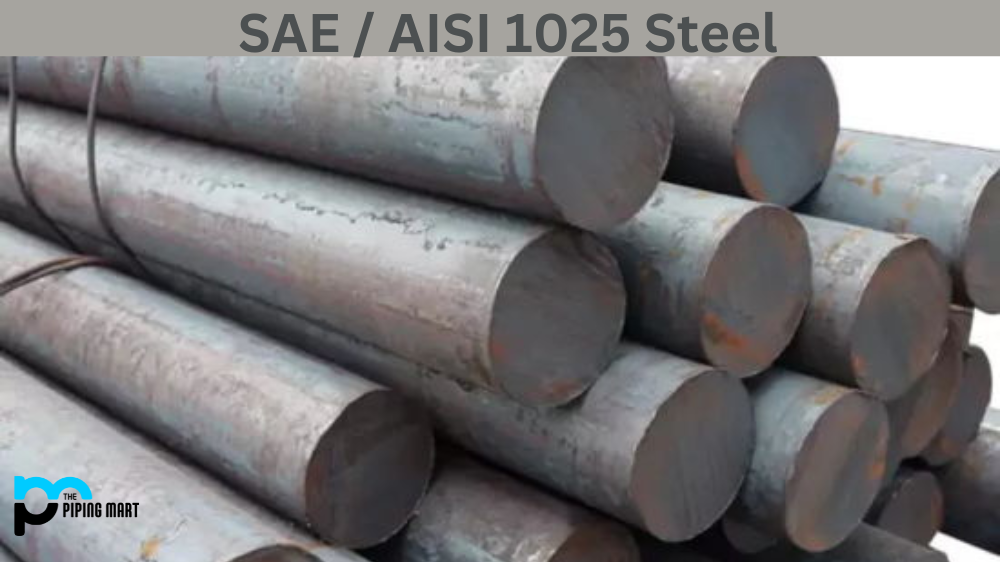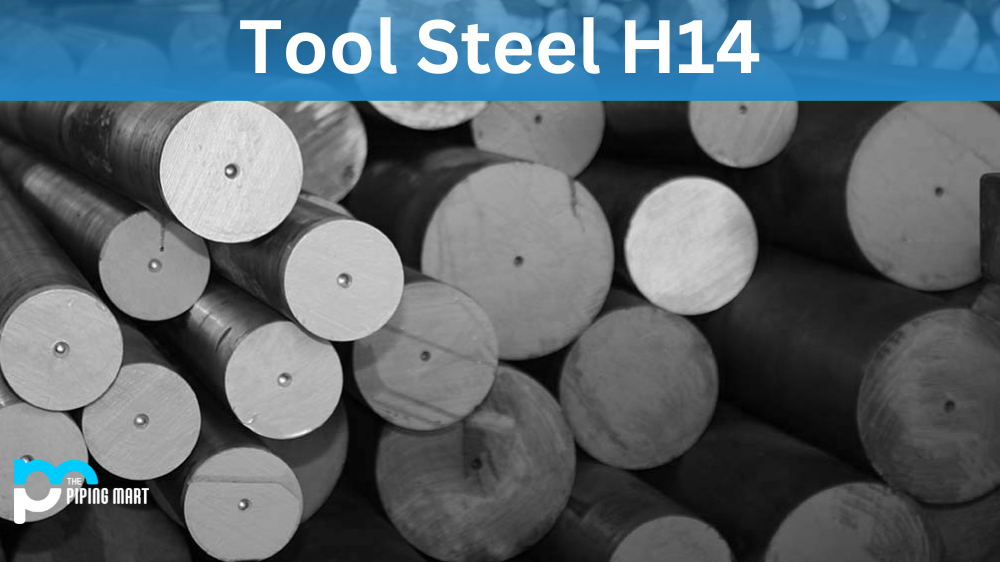SAE 1025 is a low-carbon steel that provides excellent corrosion resistance, heat resistance and mechanical properties. It can be used for a wide range of applications, from automotive components to construction materials. This article will look at the composition, mechanical properties, physical properties, uses corrosion resistance and heat treatment of this versatile steel alloy.
AISI 1025 Composition
SAE carbon steel 1025 is composed of 0.22-0.28% carbon, 0.30-0.60% manganese, 0.04% (max) phosphorus and 0.05% (max) sulfur. It also contains trace amounts of silicon, copper and molybdenum as well as small amounts of other elements such as nickel and chromium.
| Element | Content (%) |
|---|---|
| Iron, Fe | 99.03-99.48 |
| Carbon, C | 0.220-0.280 |
| Manganese, Mn | 0.30-0.60 |
| Sulfur, S | ≤ 0.050 |
| Phosphorous, P | ≤ 0.040 |
AISI 1025 Chemical Properties
Aisi 1025 carbon steel is a low carbon steel that has a very nice blend of strength and ductility. Due to its low carbon content, it is exceptionally well suited for welding, machining and forming purposes. It also offers high corrosion resistance in atmospheric environments and when manufactured with proper surface treatments can be extremely durable even after extended periods of use. Alloy 1025 also has excellent thermal properties, making it ideal for applications where even temperatures are required during production. Overall, carbon steel 1025 provides an outstanding combination of fabrication versatility, mechanical strength, and corrosion resistance all in one package.
AISI 1025 Mechanical Properties
The mechanical properties of alloy 1025 steel depend on its composition but generally provide good strength and ductility when hardened by appropriate heat treatment processes such as quenching and tempering or normalizing. For example, it has an ultimate tensile strength of 585 MPa (84 ksi) and a yield strength of 355 MPa (51 ksi). In addition, it has an elongation at breakage value of 13%.
| Properties | Metric | Imperial |
|---|---|---|
| Tensile strength | 440 MPa | 63800 psi |
| Yield strength | 370 MPa | 53700 psi |
| Bulk modulus (typical for steel) | 140 GPa | 20300 ksi |
| Shear modulus (typical for steel) | 80.0 GPa | 11600 ksi |
| Elastic modulus | 190-210 GPa | 27557-30458 ksi |
| Poisson’s ratio | 0.27-0.30 | 0.27-0.30 |
| Elongation at break (In 50 mm) | 15.00% | 15.00% |
| Reduction of area | 40.00% | 40.00% |
| Hardness, Brinell | 126 | 126 |
| Hardness, Knoop (converted from Brinell hardness) | 145 | 145 |
| Hardness, Rockwell B (converted from Brinell hardness) | 71 | 71 |
| Hardness, Vickers (converted from Brinell hardness) | 131 | 131 |
| Machinability (based on AISI 1212 steel as 100 machinability. The machinability of Group I bar, rod, and wire products can be improved by cold drawing.) | 65 | 65 |
AISI 1025 Physical Properties
The physical properties of alloy 1025 carbon steel include a 7.83 g/cm3 density with a melting point between 1100°C and 1150°C. This versatile material also has a modulus of elasticity (Young’s Modulus) between 190 GPa (27 x 106 psi) and 210 GPa (30 x 106 psi).
| Properties | Metric | Imperial |
|---|---|---|
| Density | 7.858 g/cm3 | 0.2839 lb/in³ |
AISI 1025 Thermal Properties
| Properties | Metric | Imperial |
|---|---|---|
| Thermal expansion co-efficient (@0.000100°C/32-212°F) | 12.1 µm/m°C | 6.72 µin/in°F |
| Thermal conductivity (0ºC (32°F)) | 51.9 W/mK | 360 BTU in/hr.ft².°F |
AISI 1025 Equivalent
| AMS 5046 | AMS 5075 | AMS 5077 | ASTM A29 | ASTM A510 |
| ASTM A512 | ASTM A513 | ASTM A519 | ASTM A575 | ASTM A576 |
| MIL T-5066 | MIL T-3520 | MIL S-7952 | MIL S-11310 (CS 1025) | ASTM A830 |
| QQ S-700 (C1025) | SAE J1397 | SAE J403 | SAE J412 |
AISI 1025 Uses
Alloy 1025 steel can be used for a variety of different purposes including automotive components such as drive shafts, gears and axles; construction materials such as beams; tools such as dies; fasteners; agricultural equipment; industrial machinery components; machine parts; hand tools; and many more applications where superior strength is required in combination with toughness or wear resistance at elevated temperatures up to 600°F (316°C).
Corrosion Resistance
SAE/AISI 1025 steel exhibits good corrosion resistance due to its low amount of carbon content which helps reduce the risk for oxidation during long exposure times in humid environments or near salt water sources. This makes it ideal for outdoor applications requiring high durability to withstand harsh environments without sacrificing performance or aesthetic appeal.
Heat Resistance
Heat treatment processes such as quenching or tempering can improve the heat resistance properties of SAE/AISI 1025 steel by increasing its ability to withstand higher temperatures without losing structural integrity or becoming brittle over time due to thermal shock or fatigue cracking caused by repeated heating cycles in extreme temperatures over long periods of time .
Heat Treatment
Additionally, heat treating can help increase the hardness level which will further enhance the material’s abrasion resistance capabilities making it even more suitable for use in high temperature environments where wear is an issue
Machining
AISI 1025 machining is a versatile process that can produce high-precision components for a variety of industries. This material is an alloy of carbon and iron, making it suitable for use in various functions where toughness and strength are important. It’s also resistant to corrosion, making it a popular choice amongst manufacturing professionals. AISI 1025 machining involves complex operations such as drilling, turning, grinding, tapping, and milling which can be performed with regular hand tools or automated machinery. The accuracy achieved through this method opens the door to many opportunities in fields such as engineering and aerospace fabrication. With proper planning and dedicated personnel, people are able to create highly efficient parts from this robust material.
Welding
Welding SAE / AISI 1025 steel is an important welding technique used when working on projects and machines in a variety of industries. It is formed by combining carbon and manganese, creating a harder yet ductile weld that can better withstand environmental elements. Successfully joining this grade of steel requires careful temperature monitoring, using the correct weld pre-heat procedure, and the ideal welding equipment. By following these steps, skilled welders are able to craft quality joints that are strong and dependable. With its high tolerance for bending and forming under pressure, SAE / AISI 1025 welding provides excellent solutions to a variety of manufacturing needs.
Conclusion
In conclusion, SAE/AISI 1025 is an excellent choice for many engineering applications requiring superior strength combined with good corrosion resistance, heat resistance , machinability , weldability , formability , ductility ,and toughness . Its versatility makes it suitable for use in automotive components , construction materials , tools , agricultural equipment , industrial machinery components , machine parts , hand tools ,and many other applications requiring superior performance in extreme conditions . For these reasons, this material is often chosen by engineers seeking cost-effective yet reliable solutions to their engineering challenges .

Meet Bhavesh, a seasoned blogger with a wealth of knowledge and experience. From metal products manufacturing to retail, Bhavesh has a diverse background in various industries and is dedicated to sharing his insights and expertise with readers.




